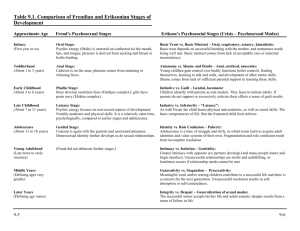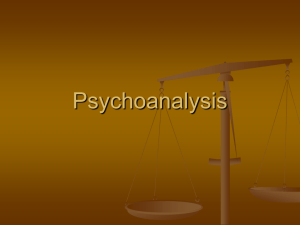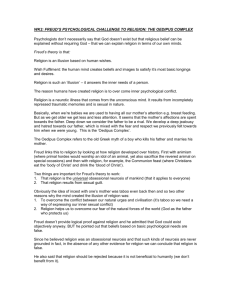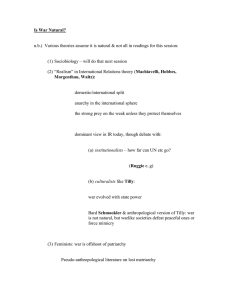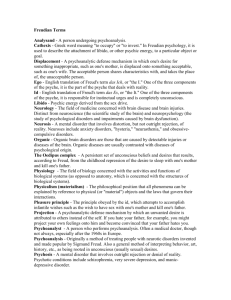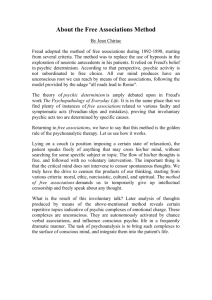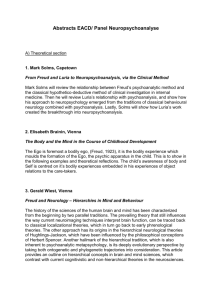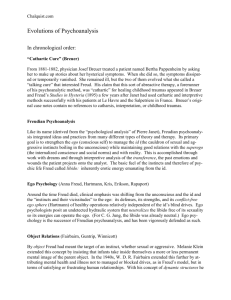Psychoanalytic & Psychodynamic Theories: Freud's Concepts
advertisement
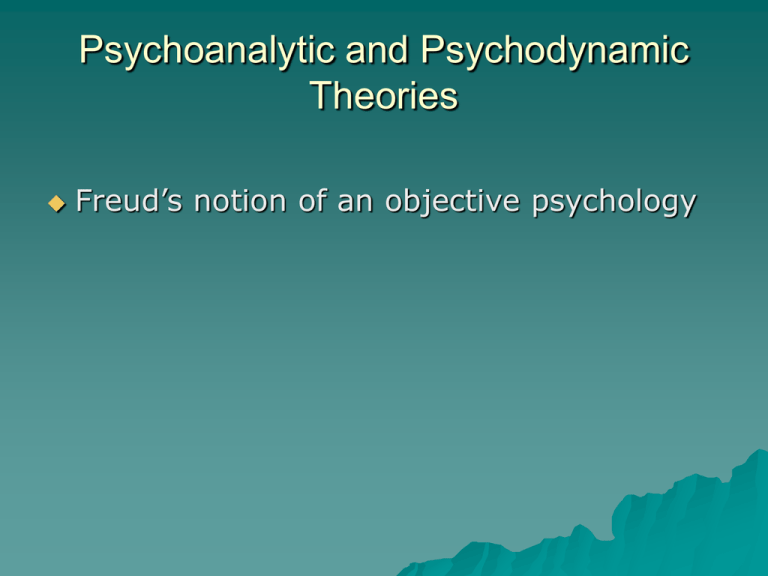
Psychoanalytic and Psychodynamic Theories Freud’s notion of an objective psychology History Wednesday Psychological Society Psycho-Analysis Group Freud A mechanistic, deterministic thinker who developed a system of psychology with biological/hydraulic elements: a system of stresses and strains, conflicts and tensions, with dynamic interaction between biological instinctive drives and social demands. Determinism How is behavior determined? Hard Determinism: The universe is like clocks, what occurs in the world or in behavior is precisely what must have occurred. Encompasses the idea that psychological events are causally related to each other and to the individual’s past. Soft Determinism: A belief that things could have gone otherwise than they did. – In Freud, there is lack of psychic freedom in the unconscious mind, but with conscious insight, we can correct our (propensity toward) undesired behavior. The concept of Dynamics The interplay of the forces in the mind, forces acting in unison or in opposition and finding expression in a form representing a compromise of the participating elements. Topography Concerns the relation of individual psychic elements to consciousness, a sort of layering of mental contents according to the criterion of accessibility to awareness. – Consciousness – Pre-consciousness – Unconsciousness Genetic principle Recognizes the prevailing and enduring influences of the past upon current mental activity. It recognizes the extent to which the past is embedded in the present and shapes current thoughts, behavior, and feelings. The Structure of Personality Id – The biological component. The primary source of psychic energy, the seat of the instincts…The pleasure principle. Ego – The traffic cop…governs, controls, regulates the personality. Ruled by the reality principle. Superego – The judicial branch…a person’s moral code, concerned with whether an action is good, bad, right, wrong…striving for “perfection.” Features of Freud’s Psychoanalysis 1. Objective 2. Physiological substratum for theory. 3. Emphasized causality 4. Reductionistic. The individual was divided into “parts” that were antagonistic toward each other: e.g., id-ego-superego. Eros vs. Thanatos. Conscious vs. unconscious. 5. The study of the individual centers about the intrapersonal, the intrapsychic. 6. The establishment of intrapsychic harmony constitutes the ideal goal of psychotherapy. “Where id was, there shall ego be.” Features of Freud’s Psychoanalysis 7. People are basically “bad.” Civilization attempts to domesticate them, for which they pay a heavy price. Through therapy the instinctual demands may be sublimated but not eliminated. 8. People are victims of both instinctual life and civilization. 9. Description of child development was postdictive and not based upon direct observation of children but upon the free associations of adults. 10. Emphasis on the Oedipus situation and its resolution. 11. People are enemies. Others are our competitors, and we must protect ourselves from them. 12. Women feel inferior because they envy men their penises. Women are inferior. Anatomy is destiny. 13. Neurosis has a sexual etiology. 14. Neurosis is the price we pay for civilization. Freudian Psychology Psychoanalysis Neo-Freudian Psychodynamic Theory Object Relations Attachment Theory Horney, Fromm, Sullivan Unconsciousness in Interpersonal Relationships Jung Adler Problem-focused


